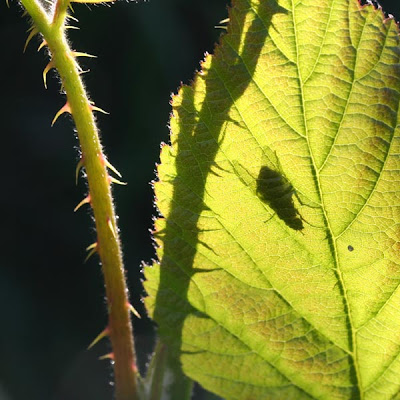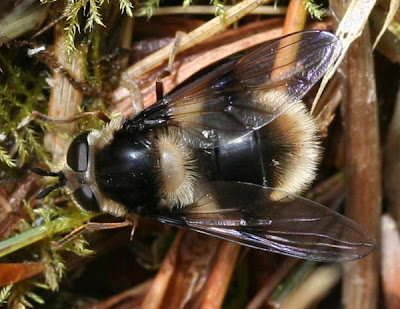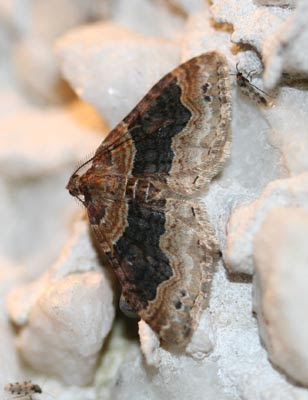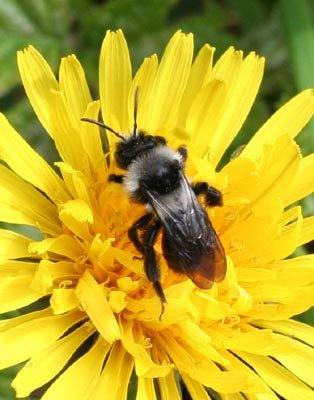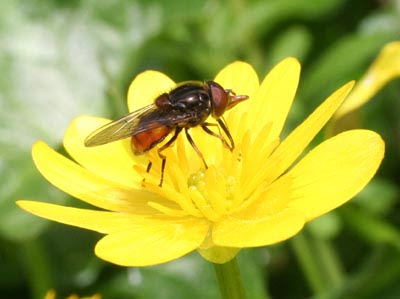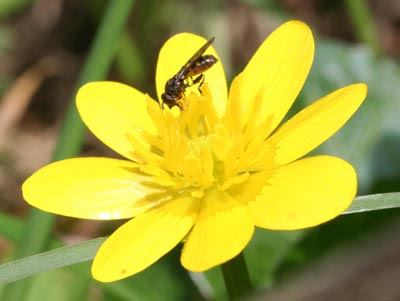Here's a close-up of the Bumblebee
Bombus cryptarum:
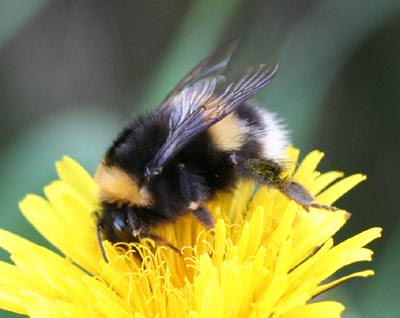 Bombus lucorum
Bombus lucorum was recently split into 3 species:
Bombus lucorum,
Bombus cryptarum and
Bombus magnus.
Bombus cryptarum was added to the Irish list in 2006, and consistent sampling has shown that my local population contains this species. I
recently posted about the Cuckoo Bumblebee
Bombus bohemicus, which was known to be parasitic on
B. lucorum sensu lato, but I don't know if it also parasitises
B. cryptarum or if I also have
B. lucorum s-s, which I rather suspect. Work to be done, here.
The best diagnostic feature of
B. cryptarum is the black notch in the forward yellow band, just in front of the wing joint:
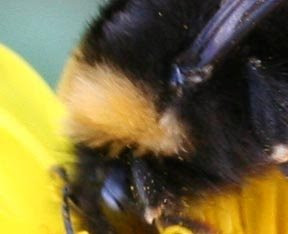
Just as the parasite
B. bohemicus is a lucorum lookalike, we also have the hoverfly
Eristalis intricarius:

Note the distinctive Eristalis loop in the wing vein.
There are two main reasons for the mimicry. In the case of parasitic species like the Cuckoo Bumblebee, it may need to be able to get into the nest undetected, so it looks rather like the host. In the case of the hoverfly, it can either be to get into the nest undetected, or to fool predators into thinking that it is a Bumblebee, and can sting.
Eristalis intricarius larvae live in the bottom of ditches, so they are applying the mimicry to avoid being eaten by birds.
Eristalis intricarius is known to be widespread, but in low numbers, and of the 50 or so specimens I have found over the past four years, they can all be pinned down to two separate patches of ditch, each no more than 10 metres long. So there is something that controls their distribution very tightly. To make things even more confusing, the two ditches (roughly 1.5 km apart) could hardly be less similar:
One runs North-South, the other East-West. One is at the edge of cattle pasture; the other, the fringe of a bog. One is fringed by Meadowsweet, the other Soft Rush. Just about the only thing in common is some Hawthorn and some Gorse and Bramble. Interesting......

 The list of options for that foodplant is very small (one micromoth and one fly), and this looks like a fly mine, so I'd have to opt for Cheilosia semifasciata - which is a hoverfly.
The list of options for that foodplant is very small (one micromoth and one fly), and this looks like a fly mine, so I'd have to opt for Cheilosia semifasciata - which is a hoverfly.